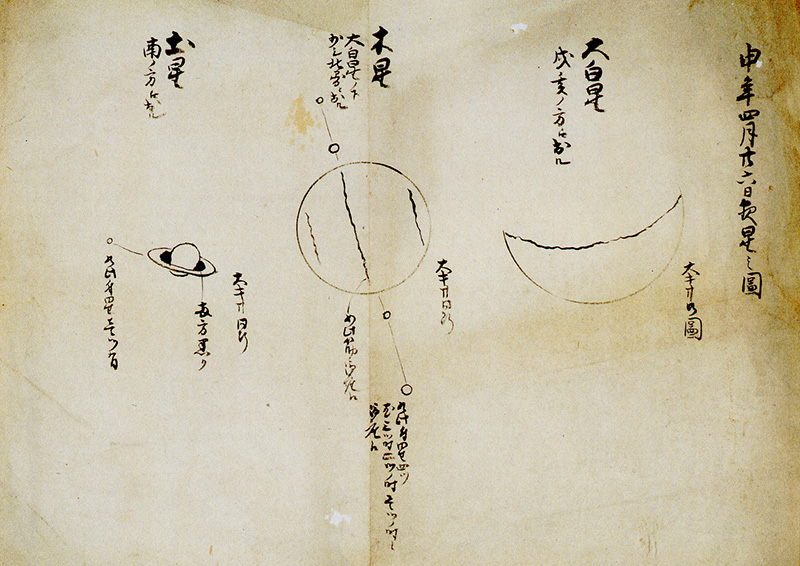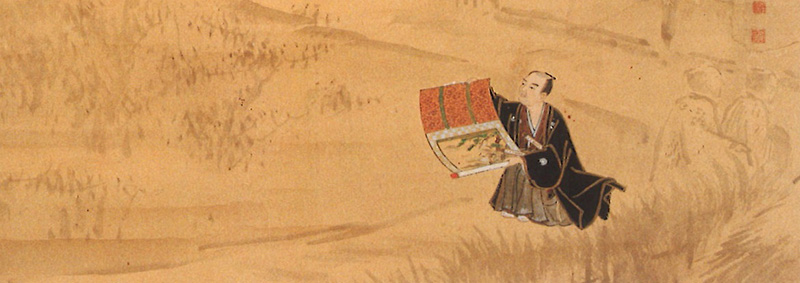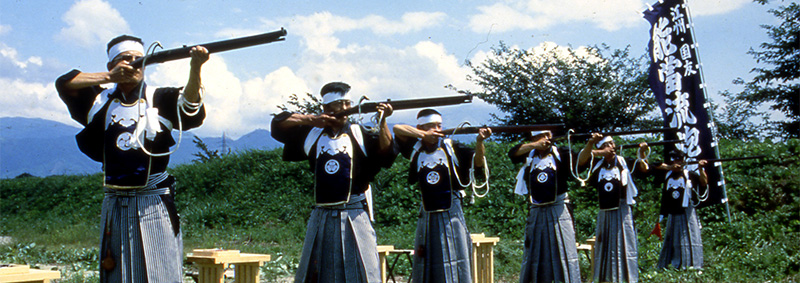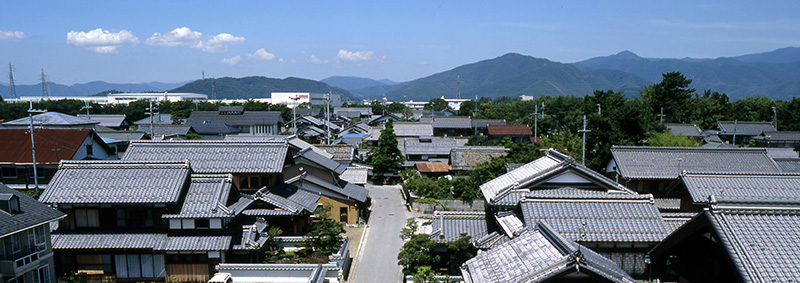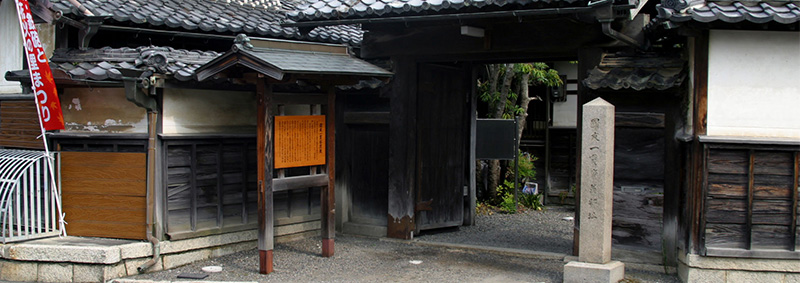MATERIALIKKANSAI KUNITOMO
All of the material introduced here can be found in the Kunitomo Ikkansai Document Index.
1. Yumetakazu Yamagatagihou

-
This is the only known portrait of Ikkansai. Ikkansai requested Gihou Yamagata, a painter in Nagahama, to paint the scenery in one of Ikkansai’s dreams that pictured a flying hawk.
Ikkansai and the hawk are skillfully drawn to appear to be coming from the page. It can be said that this is the masterpiece of Gihou using the color painting on paper method.
2. Daisho onteppo haritateseisaku
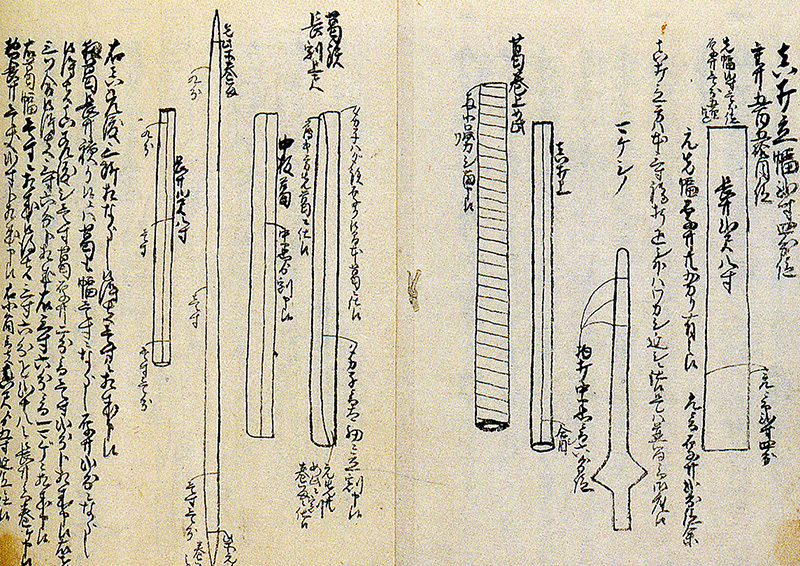
-
Published in 1818 by request of former roju Sadanobu Matsudaira. With the information outlined in this book anyone with blacksmithing knowledge could even construct something as difficult as a cannon. The manufacture of firearms was passed down from generation to generation however there was no standardization.
It is possible to say that because of this manual uniformity was achieved.
3. Kihouki
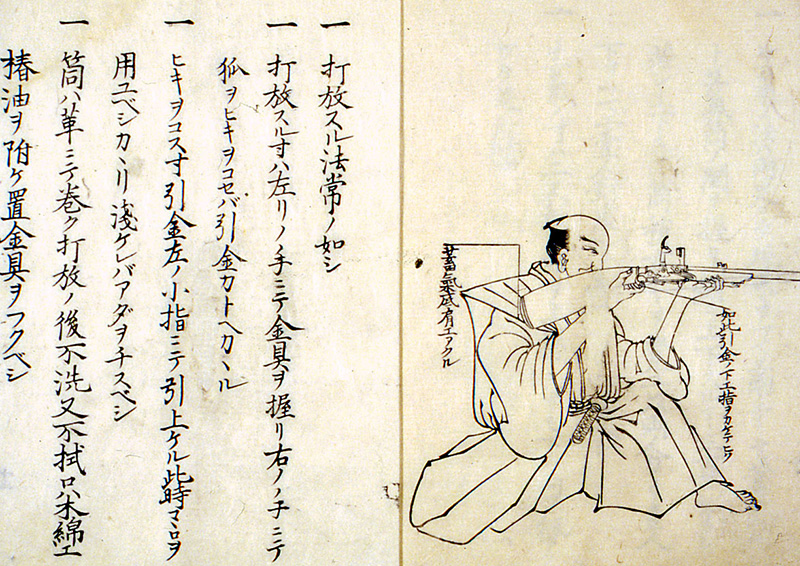
-
Illustration explaining the operation of airgun published in the spring of 1819. This document outlines the operation of the airgun (kihou) as well explaining its parts such as metal fittings, the dougane, the tank and the pump. This would have been attached to each air rifle delivered and would have been used an instruction manual.
4. Kihoushishyazu (Record of firing air rifle)
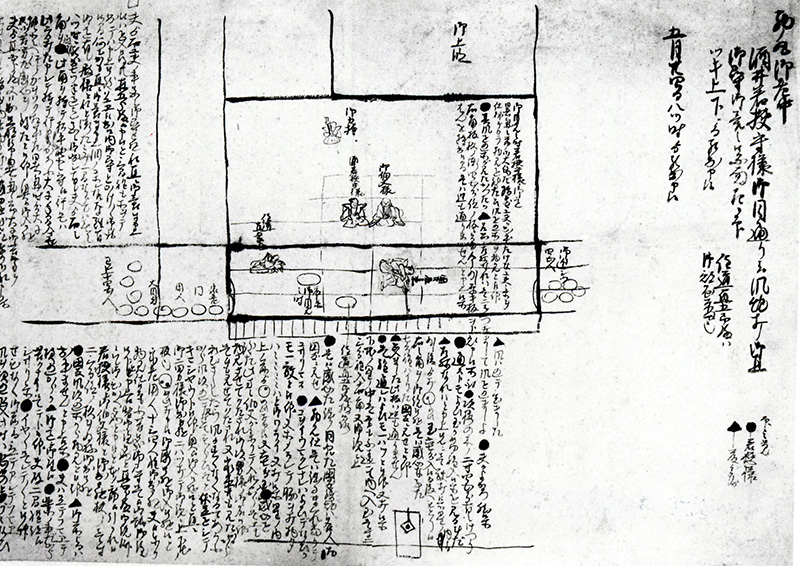
-
This document was written and illustrated when a test firing was held for the Roju Tadayuki Sakai on May 24th, 1819.
Tadayuki was shown a target hit by the airgun and was very impressed with the result calling Ikkansai a master of his trade. However, Ikkansai seeing the target called the impressive feat a ‘fluke.’
The surprise of the Daimyo and the humility of Ikkansai are expressed vividly.
5. Kouseidokyuuzu (Crossbow Ilustration)

-
Sadanobu Matsudaira requested the manufacture of an improved crossbow. This revised crossbow looks similar to modern day crossbows. Only this illustration remains.
By splitting the bow in the middle accuracy was improved, the oshi of the common bow was replaced with a spring and what was traditionally made with wood was replaced with steel. Ikkansai’s pursuit of craftsmanship mastery can be perceived
6. Reflecting Telescope
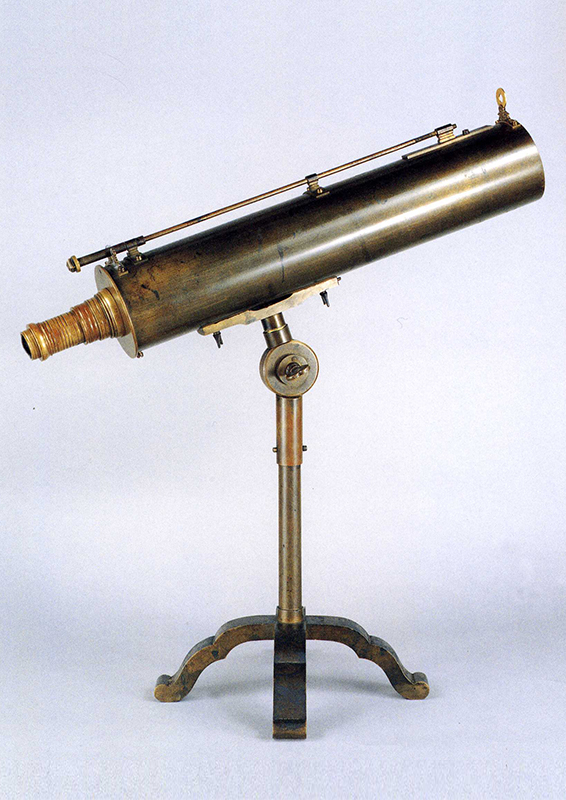 Reflecting Telescope
Reflecting Telescope
(Kunitomo Ikkansai Document Index)-
This is one of four reflecting telescopes made by Ikkansai to remain. It is thought that this telescope was manufactured in 1836 but there is no inscription of a date.
As well as the telescope found in the Hikone Castle Museum the platform and fulcrum have been upgraded. Furthermore, when compared to the other reflecting telescopes remaining the telescope in Ikkansai’s Birthplace is thought to be the last one produced.
7. Illustration of Sunspots
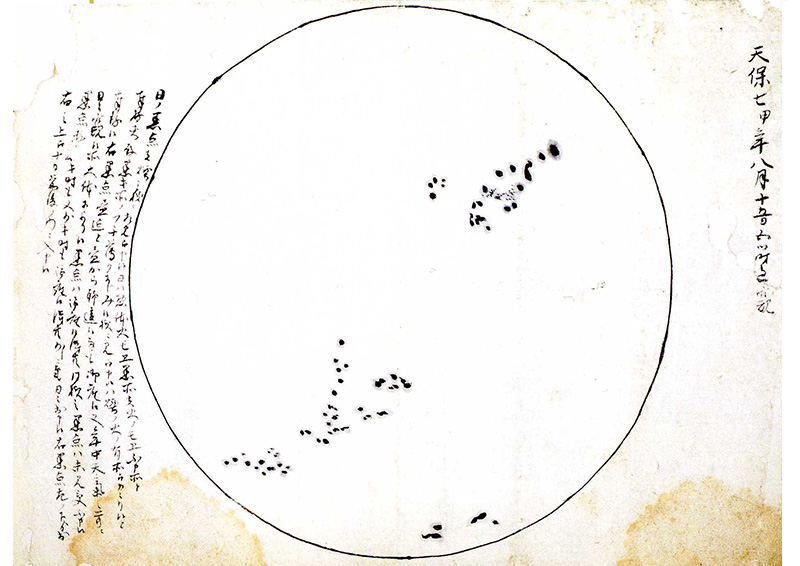
-
A record of one of Ikkansai’s observation of sunspots at 8 am on August 15th, 1836.
This diagram, along with a highly descriptive observation log on the left side, is illustrated showing sunspots with lighter shaded areas surrounding them. This was the first consecutive observation of sunspots in Japan.
8. Observation of Moon's Surface
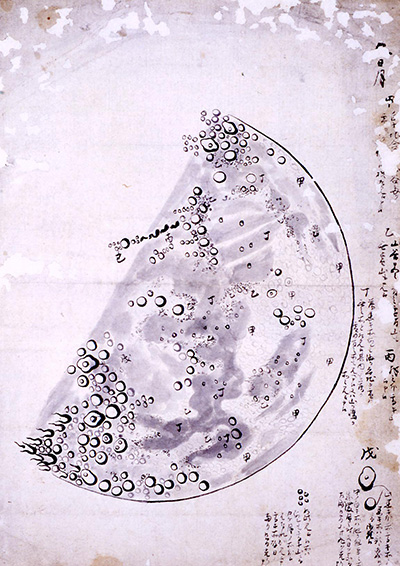
-
An observation of the moon surface illustrated by Ikkansai on August 9th in 1836.
In Ikkansai’s illustrations of the moon from 1833 the craters were only drawn as points, but by 1836 the accuracy of his illustrations had remarkably heightened. The shape of lunar maria and the various size of craters are beautifully distinguished.
9. Illustration of Planets
10. Abikiryuu (Secret Art of The Chinese Phoenix)
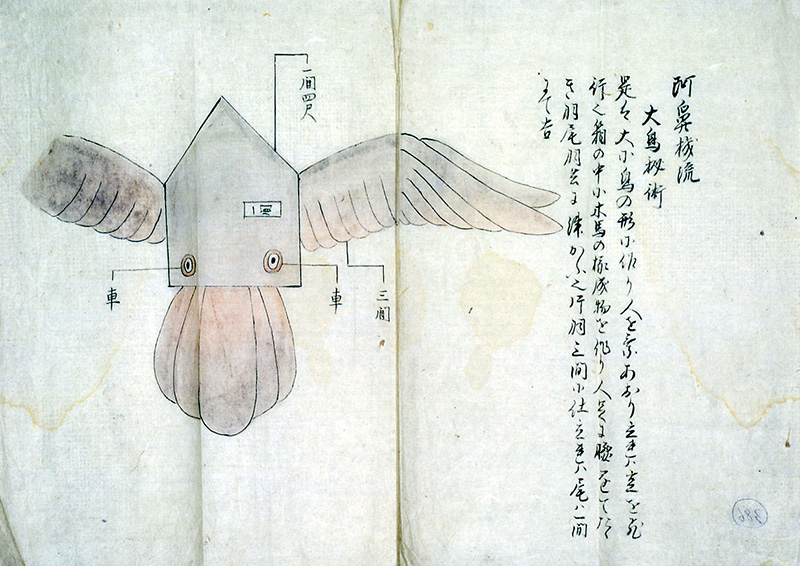
-
According to Kiyoshi Matsuda, Abikiryuu is a Japanofication of the Latin Avicula meaning little bird. Following the blueprint the width would be about 13.3 meters with a bench in middle where a person would sit and peddle making the wings flap.
Whether it was produced or not isn’t known, but unfortunately the design wouldn’t allow for flight. Nevertheless, during the Edo period there isn’t another person known to draw plans for a flying machine showing his thirst for knowledge and spirit of inquiry.
Concerning the use of reference materials
The materials that are publicized in the Ikkansai Kunitomo Document Index may be used for research purposes.
-
Technological Prowess and Life
An introduction to Ikkansai’s upbringing and works throughout his life.
-
Timeline
A chronology of Ikkansai’s life.
-
Historical Document Research
A two year project funded by Nagahama city to research distinctive culture for regional revitalization.
-
Ikkansai Kunitomo Document Index
Documents currently under examination and organization. The latest findings are posted.
-
Important Documents
An introduction to the many inventions that Ikkansai envisioned.
-
Request reference material
The materials that are publicized in the Ikkansai Kunitomo Document Index may be used for research purposes.
© 2026 Kunitomo Gun Museum

